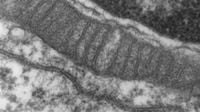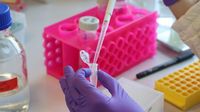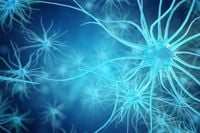A Major Breakthrough In Understanding Charcot's Disease
Chinese Researchers Identify Genetic Anomaly That May Lead To New Treatments
In a significant advancement in the fight against Charcot's disease, also known as amyotrophic lateral sclerosis (ALS), researchers from the Academy of Medical Sciences in China have identified a potential genetic cause of this devastating condition. Their findings, published in the prestigious journal Nature Neuroscience on March 11, 2025, could pave the way for new therapeutic avenues for a disease that currently has no cure.
Charcot's disease affects approximately 8,000 people in France alone, predominantly individuals aged between 50 and 70 years. The disease is characterized by progressive muscle paralysis that ultimately leads to respiratory failure and death, typically within three to five years following diagnosis. Alarmingly, around five deaths are attributed to the disease each day, according to the Association pour la Recherche sur la SLA (SLA Research Association).
Until now, the origins of Charcot's disease have remained largely mysterious, particularly in cases where there is no family history of the condition, which accounts for 90% of all cases. The newly identified genetic anomaly, found in the mitochondrial DNA of affected patients, may shed light on this enigma. Mitochondria are known as the powerhouses of cells, providing the necessary energy for cellular functions. The researchers discovered that half of the 40 patients with the sporadic form of the disease exhibited a common mutation that disrupts the respiratory chain of the mitochondria.
In an innovative approach, the researchers introduced this genetic anomaly into the mitochondrial DNA of genetically modified rats. As these rats aged, they developed symptoms reminiscent of Charcot's disease, suggesting a direct link between the mitochondrial dysfunction and the onset of the disease. "These elements represent a significant advance in understanding and therapeutic development," the researchers stated in their study's conclusion.
Vincent Procaccio, a medical genetics expert from the CHU d’Angers, emphasized the potential implications of these findings. He noted, "If the results of this study are confirmed by the analysis of other cohorts of patients with ALS, it would be a major advance, both in terms of diagnosis for sporadic cases and in considering therapies." This sentiment reflects a growing optimism in the scientific community about the possibility of developing effective treatments targeting mitochondrial dysfunctions.
The researchers caution, however, that further studies are necessary to confirm their findings across larger patient cohorts. Xiaorong Zhang, one of the leading authors of the study, stated, "We are seeking new patients to confirm the high frequency of these mutations, but we already know that many exhibit an anomaly in the respiratory chain of their mitochondria." This call for additional research underscores the importance of collaboration in the scientific community to validate these promising results.
Currently, there are no curative treatments for Charcot's disease. The existing options are limited to neuroprotective drugs that can slow the progression of symptoms but do not halt the disease's relentless advance. The identification of a genetic basis for the disease could lead to targeted therapies that address the underlying mitochondrial dysfunction, offering hope to patients and families affected by this condition.
As the research progresses, the potential for new treatment strategies could transform the landscape of care for those living with Charcot's disease. With continued investigation and validation of these findings, there is a possibility that future therapies could significantly improve the quality of life for patients and extend survival rates.
In summary, the discovery of a genetic anomaly in the mitochondria of Charcot's disease patients represents a hopeful turning point in understanding this complex and often misunderstood condition. As researchers continue to explore this avenue, the prospect of effective treatments for ALS becomes increasingly tangible, bringing renewed hope to the thousands affected by this devastating disease.









